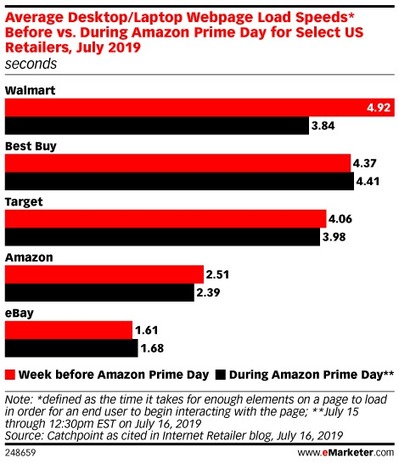Amazon managed to hold its most successful Prime Day yet. Though the company did not disclose its sales figures—or how many new Prime members were added—Amazon announced that it sold 175 million items during the two-day event and surpassed its combined sales total from Black Friday and Cyber Monday in 2018.
“While Amazon is famously oblique regarding Prime Day performance—heavy on the superlatives and light on the stats—it’s pretty clear from the evidence pouring in that it was a massive success,” eMarketer principal analyst Andrew Lipsman said. “With the site and app avoiding major hiccups this year and the deals seemingly improving in quality, shoppers are responding with a flurry of activity unlike anything we’ve ever seen online during the summer months.”
Here’s why Prime Day 2019 was a success:
A longer Prime Day wasn’t the only reason for more sales.
Record sales weren’t just the result of Amazon extending Prime Day from a 36-hour event in 2018 to 48 hours this year. Ecommerce intelligence company Edison Trends analyzed 120,000 online transactions on Prime Day and found the average hourly spend of US Amazon customers this year was up 35% compared with Prime Day 2018 and 55% higher than Prime Day 2017. (Editor’s Note: Edison Trends’ data has been scaled so that the highest average hourly spend is set to 100%.)
Load times slowed slightly, but there were no major outages.
Last year, Prime Day temporarily faltered when Amazon’s website crashed due to the uptick in traffic. eBay even poked fun at the hiccup this year with its own 24-hour “crash sale” that took place during the first day of Prime Day 2019. But, fortunately for Amazon, the website didn’t experience any major outages, and according to digital monitoring platform Catchpoint, average website load times during Prime Day were only 0.12 seconds slower than the week leading up to Prime Day. Walmart, which had a rival sale overlapping Prime Day, had an average website load time that was 1.08 seconds slower during the 48-hour Prime Day window compared with the week leading up to Prime Day.
Sourced through Scoop.it from: www.emarketer.com



Leave A Comment